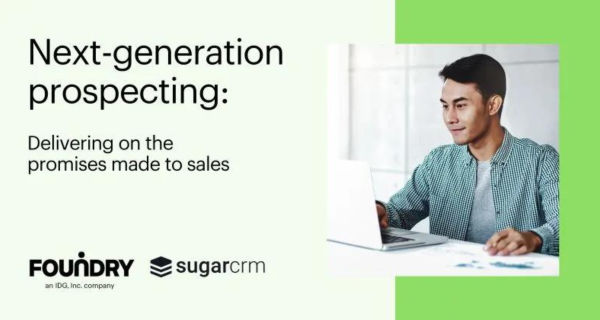When we last surveyed B2B technology marketers around the world in 2021, the positive impact of account-based marketing (ABM) was already clear. Although one-third of respondent organisations had been practising ABM for less than a year, six out of 10 told us that ABM was already “extremely important” to marketing performance in their organisation.
For many tech marketers, 2021 has been the year in which they worked to master the nuances of running ABM programs efficiently, at scale. We know where the most effort has been expended, largely because tech marketers told us about their biggest challenges when we surveyed them. Here, then, is a run-down of the top five challenges that the tech marketing community has been working on during the past 12 months – and the ways in which a best-in-class ABM platform helps to address these challenges.
Challenge No.1: Creating target account lists
35% of respondents in our recent benchmarking study said that creating a target account list is one of their biggest challenges.
Foundry, ABM Benchmarking Study for Tech Marketers (2021)
This was actually the second most common challenge amongst tech marketers but it’s obvious why it makes sense to address this challenge first as it sits right at the start of the ABM journey. Building a target account list is the first stage in a two-part process that identifies accounts with a high propensity to purchase.
When you’re creating target account lists, the main concern is to filter out behavioural noise and zoom in on the data to identify the signals that suggest you have opportunity to close a deal.
The foundation is intent data, ideally acquired from all three of the following sources:
- Your organisation’s own in-house CRM systems
- A privacy-first third-party vendor of intent data such as Bombora
- A similarly privacy-first intent-based list from a media organisation such as Foundry
Typically, the combined list that emerges will be large. To narrow down the scope at this stage, you need to search the data to exclude accounts that do not match your ICP. More importantly, you’ll need to identify accounts consuming the right kind of content. Typically, experienced ABM practitioners use keywords from three sources to do this: the ready-made taxonomy within their ABM platform, their organisation’s historical data on keywords used by buyers in the run-up to a purchase, and keywords generated by an analysis of their organisation’s existing website.
NB: do not be deceived into thinking that target list creation is a one-time process. As we’ll see, it’s not: intent data is refreshed continually in your CRM system and on the databases of 3rd party suppliers. Using data that is as fresh as possible in ABM campaigns pays dividends. Accordingly, it’s best to think of creating target lists and prioritising them (our next step) as a rolling process. Many organisations run through the same process on a weekly basis.
Challenge No.2: Prioritising accounts within your target list
36% of people in our recent benchmarking study said that prioritising accounts for ABM campaigns is one of their biggest challenges.
Foundry, ABM Benchmarking Study for Tech Marketers (2021)
A target account list based on the factors we’ve mentioned above will be large. The biggest challenge marketers face (36%) is prioritising their target account list. Here’s where a second stage of refinement is beneficial. Looking in more detail at the intent signals attached to each account in order to identify those with the best chances of conversion will help you overcome this. We call this process prioritisation. It tells marketers which accounts within are generating the strongest intent signals and need to be addressed with priority.
If you think this sounds like the long-established practice of lead scoring, you’re 100% correct. But there’s a difference here: very few experienced ABM campaigners use manual lead scoring because the lists involved are too long, making the manual process impractical.
Instead, you’ll want to look for ABM platforms who use proprietary algorithms that examine intent data and score each account for propensity. A tool for doing this is Smart Score. The system is dynamic, meaning scores are benchmarked against historic behaviour in specific accounts and then updated with revised scores based on new activity as campaigns proceed.
Challenge No.3: Reach and engagement
33% of people in our recent benchmarking study said that reach/engaging accounts is one of their biggest challenges.
Foundry, ABM Benchmarking Study for Tech Marketers (2021)
Concerns about reach and engagement ultimately resolve down into a single question: are you reaching members of individual account groups with the right messages at the right time in a way that maximises engagement?
Let’s start with the right account members and the right content. Understanding the different customers within each account requires generalised personas. All too often, however, personas are constructed on the basis of conventional wisdom or – less often – one-time research.
Intent data offers a way of enriching these insights. The content with which accounts are interacting – visible from intent data – will give you a detailed picture of the pain points they (and other account group members like them) are seeking to resolve. This can be useful in targeting a specific account and for enriching “typical” personas. The same logic applies to content production: for each typical account member, your content team can construct a schedule of assets that cumulatively address their most prominent questions and concerns.
Foundry maximises engagement by offering marketers the ability to target different persona types with a range of approaches across multiple channels, including email and online advertising. For specific personas (e.g.technical influencer), video advertising may work best. For others, distribution of long-form content through a marketing automation platform may be the right solution early in the nurturing process, but not during the later stages.
Over time, marketers can expect to get better at crafting these journeys: historical data will indicate which approaches work best with which audiences.
Anxieties about reach can be easily remedied by working to understand more of the universe. By making intent data easy to work with, Foundry enables this. Segmentation becomes progressively easier as marketers discover previously unrecognised niche customer groupings with varying mixes of pain points, business drivers and functionality requirements.
In one-to-many ABM campaigns, the power of personalisation can become a viable tactic the closer you get to conversion. Without the need for HTML/CSS coding, Intuitive tools allow marketers to construct account-customised web pages, flyouts, popups, content hubs and microsites and integrate these into your own corporate website. In aggregate, website personalisation and advertising capabilities open up significant opportunities, and when you combine those with orchestration, you can effectively unify messaging and increase engagement.
Challenge No.4: Orchestrating multiple channels
30% of people in our recent benchmarking study said that orchestrating multiple channels is one of their biggest challenges.
Foundry, ABM Benchmarking Study for Tech Marketers (2021)
.png)
High performing ABM platforms enable you to run sophisticated campaigns because they embrace multiple moving parts: from intent data, to content, outreach across multiple channels and sales activation. All of this functionality is welcome, but requires a mechanism to make the process as efficient as possible for practitioners, and to gather it all in one place
Orchestration sets the standard for ABM campaign management interfaces. Two key elements drive the system. The first: automated triggers configured by users. A simple example: within a specific campaign, you may want to expose a specific account group to a specific online creative once the members of that group generate – let’s say – 10 clicks and 1,000 impressions centred on a specific piece of content. Accounts that don’t engage to this threshold will obviously require a different next action: perhaps assignment to an additional nurturing group for additional email-based activity. ABM allows users to map out the entire length of a campaign using automated decision triggers like these. Every trigger can be refined, changed or replaced at any time on the basis of in-campaign feedback.
The second element driving the system is real-time input from the intent data that allowed users to build target lists and prioritise accounts in the first place. Intent data doesn’t stand still, it changes constantly. Accordingly, Orchestration pulls updated intent data through the funnel, alongside the relevant
Challenge No.5: Gaining sales buy-in
30% of people in our recent benchmarking study said that gaining sales buy-in is one of their biggest challenges.
Foundry, ABM Benchmarking Study for Tech Marketers (2021)
Sales organisations are driven by incentivisation. And at the heart of incentivisation sits a simple requirement: deliver more conversions. To the extent that you – and your ABM platform – can make that process easier, you will generate buy-in.
One common misconception is that sales only sees the benefits of ABM at the moment of truth: when a warm lead drops into a sales representative’s inbox, ready for conversion. In fact, collaboration between marketing and sales pays dividends at multiple points in the lifecycle of ABM programs. It’s no exaggeration to say that ABM has the most impact when collaboration between sales and marketing is close and ongoing. Here are some examples of how sales and marketing can work together to unlock the full potential of ABM.
- Early-stage conversion of MQLs
We have seen how ABM uses intent data to score the buying propensity of specific accounts. The automated scoring of large-scale lists generates target accounts for ABM. But typically, it also generates a fair amount of low-hanging fruit. These are high-scoring accounts that don’t need extensive nurturing because they already display all the signs of being ready to purchase. Leads like this can go straight to sales for conversion, bypassing the need for nurturing.
Marketing should work with sales to define the criteria that will enable these MQLs to be reclassified as SALs. These conversations have a double purpose: they help marketing better understand sales priorities and they help sales to better understand the lead scoring process. The overall impact is a win for everyone: more MQLs converting more rapidly.
- Get your story straight
A marketing team using an ABM platform can build, automate and revise campaign activity for specific customer segments, selecting and scheduling content that corresponds to customer pain points, and typical objections. Meanwhile, sales teams work to build their own insights and outbound communications, ready to be deployed at the moment of truth. To the extent that both sides collaborate closely on this, the customer will witness a narrative thread that’s coherent and consistent, from the top of the funnel to the bottom. On its own, this won’t guarantee conversions. But this is a far more productive approach to nurturing and conversion than the alternative, which involves marketing and sales each communicating with an account using differing and disjointed narratives.
This kind of collaboration can play out in multiple ways, from using intent data to identify productive talking points for sales, to marketing using intent data to help prioritise sales follow ups.
- Make life easier with Sales Activation
Foundry ABM offers all users a Pipeline Impact Report which is particularly beneficial when demonstrating the direct impact ABM has had on an account. This is one detail that will make gaining sales buy in a lot easier for any marketer.
And once you’ve got sales buy-in, remember to agree on triggers for sales activation within your ABM platform. Once that process is triggered, sales representatives revive the data, the assets and workflow tools required to convert those engaged accounts into customers.
Conclusion
Why is ABM so challenging?
The simple answer is that once we begin to move away from marketing as a form of broadcasting – the same message transmitted simultaneously to a large audience – the permutations involved start to grow exponentially. The number of tasks that need to be taken care of also expands.
These tasks include managing intent data and triggering variable options based upon real-time data inputs at different points across multiple channels and customer journeys. Both are sufficiently complex and detailed that intelligent systems are needed to combine all the information together and execute them.
Smart systems do the heavy lifting: they abstract away complexity, leaving marketers to manage the overall strategy and make dynamic decisions l: setting and revisiting the strategic parameters for campaigns, and focusing on the human relationship between marketing and sales that remains vital.
The truth is that the level of challenge your encounter with ABM depends in large part on whether you are using a dedicated platform designed for the job. If not, the challenges you encounter may soon start to feel insurmountable.






